12 Ways the Best Physical Therapy NYC Improves Everyday Health
Navigating daily life can take a toll on our bodies, whether it's from long hours at a desk, pushing through workouts, or simply aging. Physical therapy offers a supportive hand, helping us heal and thrive. In this blog, we’ll explore a dozen insightful ways that the best physical therapy NYC can enhance your everyday health, making your life not only more comfortable but also potentially more active and fulfilling.
1. Enhancing Mobility and Flexibility
Physical therapy offers tailored exercises that help improve your range of motion, making everyday activities easier and more enjoyable.
Enhanced mobility doesn’t just stop at the gym; it translates to greater ease in day-to-day tasks. Imagine bending down to tie your shoes without discomfort or reaching for items on a high shelf without strain. These improvements can significantly elevate your quality of life. Therapists assess your individual needs, ensuring exercises are customized to address specific limitations. Whether you're a busy professional or a stay-at-home parent, feeling more agile allows you to engage fully in your life without the shadow of limitations.
Regular sessions focused on flexibility can surprisingly lead to decreased stress levels. As your body loosens up, so does your mind. The act of engaging in mobility exercises can foster mindfulness, providing a dual benefit to mental and physical wellness. Ultimately, it’s about creating a harmonious connection between your body and mind that enriches everyday living.
2. Alleviating Chronic Pain
From back pain to joint issues, physical therapy provides techniques and treatments that target pain sources for lasting relief.
The journey from persistent discomfort to relief can be transformative. Skilled physical therapists use modalities like manual therapy, dry needling, and advanced technology to reduce pain effectively. They not only address symptoms but also delve into the root cause, offering strategies for sustainable relief. Just think: tackling chronic pain can liberate you from cycles of dependency on medication and help you reclaim an active lifestyle.
Moreover, learning pain management techniques during sessions prepares you to face daily challenges. This education empowers you to make informed decisions about your health, ensuring you feel more in control of your body. With the right support and guidance, finding balance in life while managing pain becomes an achievable goal.
3. Strengthening Muscles for Daily Tasks
>Therapists work with you to build strength essential for performing daily activities, reducing the risk of injury.
Picture carrying groceries in from your car or lifting your child effortlessly; strengthening those everyday muscle groups is key. Physical therapy employs exercises designed to target specific muscle groups, reinforcing both strength and stability. By focusing on functional fitness, therapists not only prepare you to handle typical chores without flinching but also minimize the chances of accidental injuries due to weakness.
In addition, this newfound strength enhances your overall resilience. Activities you once saw as daunting can become effortless, granting you newfound freedom. Whether it's playing with kids or engaging in hobbies, the ability to move confidently without fear of injury opens up a world of possibilities.
4. Improving Posture and Body Mechanics
Expert guidance on posture enhances body mechanics, which can decrease the likelihood of discomfort during everyday movements.
Good posture is often underestimated in its impact on overall health. Misalignment can lead to strain and discomfort, affecting everything from work productivity to leisure time. Physical therapists analyze your posture and provide actionable insights that can immediately improve your body mechanics. By becoming aware of how you sit, stand, and move, you can reduce the chances of back and neck pain, fostering a better day-to-day experience.
Furthermore, implementing better posture is not just about comfort; it can also boost confidence. Standing tall can change your presence in both personal and professional settings, demonstrating self-assurance. Over time, minor adjustments can yield significant results, enhancing your health and the way you relate to the world.
5. Facilitating Recovery from Injuries
>Post-injury, physical therapy is key to restoring function and guiding your body back to its optimal state.
Injury recovery is often a gradual process, and having the right support can make all the difference. Physical therapy provides a structured approach to rehabilitation, focusing not just on healing but also on rebuilding strength and confidence. The collaborative environment you form with your therapist plays a pivotal role, ensuring that you remain motivated along your recovery journey. As you track your progress, every small gain can feel monumental, keeping your spirits high.
6. Customized Exercise Programs
>Therapists design personalized exercise regimens that cater to your specific health needs and goals.
The beauty of customized programs lies in their adaptability. As you progress, your therapist will modify the exercises to match your evolving capabilities and objectives, promoting continuous improvement. These tailored strategies make it easier to stay motivated as they directly address your unique challenges and aspirations. Whether you aim to recover from surgery, manage chronic pain, or improve athletic performance, a personalized approach is essential to achieving lasting results.
This individualized focus extends beyond physical improvements; it instills a sense of ownership over one’s health. With the aid of professionals, you’re not just participant but also an active collaborator in your wellness journey, making every step even more satisfying and effective.
7. Managing Post-Surgical Rehabilitation
>Following surgery, physical therapy can expedite recovery and help you regain strength and mobility effectively.
The post-surgical phase is crucial for ensuring that your body heals properly. Consider physical therapy as a bridge, connecting surgical intervention and your return to daily activities. Therapeutic exercises are carefully curated to promote healing while carefully observing any limitations you may have due to surgery. With proper guidance, you can move beyond mere recovery into a state of renewed strength and stability, minimizing the likelihood of setbacks.
8. Boosting Athletic Performance
Athletes can benefit from focused physical therapy to enhance performance and prevent injuries, promoting a healthier training routine.
Even the most seasoned athletes can face injuries that disrupt their training cycles, making physical therapy an invaluable resource. Through tailored exercises and assessments, therapists provide strategies that enable athletes to perform at their peak while minimizing injury risks. This preventative approach not only enhances current physical capabilities but also educates athletes on maintaining their bodies for the long haul. The insights gained from therapy sessions will help you listen to your body’s signals more intuitively, shaping smarter training habits.
9. Promoting Mental Wellness Through Movement
Physical therapy not only aids physical health but also supports mental wellness through structured movement and physical activity.
Movement has profound impacts on mental health, and physical therapy harnesses this relationship beautifully. By engaging in physical activity, you release endorphins, which can uplift your mood and even alleviate symptoms of anxiety and depression. The act of focusing on your physical condition allows for a meditative experience, easing daily stressors. Plus, connecting with a therapist during sessions creates a supportive environment where emotional well-being can be discussed openly.
10. Enhancing Balance and Coordination
>Therapists help improve balance and coordination, vital for preventing falls and maintaining independence as you age.
As we age, the risk of falls increases, making balance and coordination essential areas to focus on. Through specialized exercises, physical therapy strengthens your proprioception — the sense of where your body is in space. This enhancement is particularly beneficial for older adults, as it can significantly reduce the likelihood of accidents. However, fostering balance is useful for any age group, paving the way for active engagement in physical activities.
Picture having the confidence to navigate your environment without fears of stumbling. With targeted therapy, you can achieve greater independence and lead a freer life, partaking fully in activities you truly enjoy. Every improvement in coordination reflects not only physical growth, but also personal triumph.
11. Educating on Preventative Care
>Part of the service includes teaching you how to maintain your body, helping prevent injuries before they happen.
Prevention is often the best medicine, and physical therapy places significant emphasis on education. As you work through your sessions, therapists instill knowledge on how to recognize body signals and make proactive choices. Armed with this information, you can adjust your activities to safeguard against potential injuries. This empowerment can lead to lifelong health benefits, as you invest in your body’s future capabilities.
12. Creating a Sustainable Health Plan
>Physical therapists work with you to establish a long-term plan that supports ongoing health and wellness.
Sustainability is integral to any wellness journey. Short-term fixes might lead to temporary results, but ongoing health requires dedication and a structured plan. Physical therapists can help you craft a comprehensive, actionable approach that adapts as your life changes. This mentoring relationship builds accountability, ensuring you remain committed to your goals even when challenges arise.


